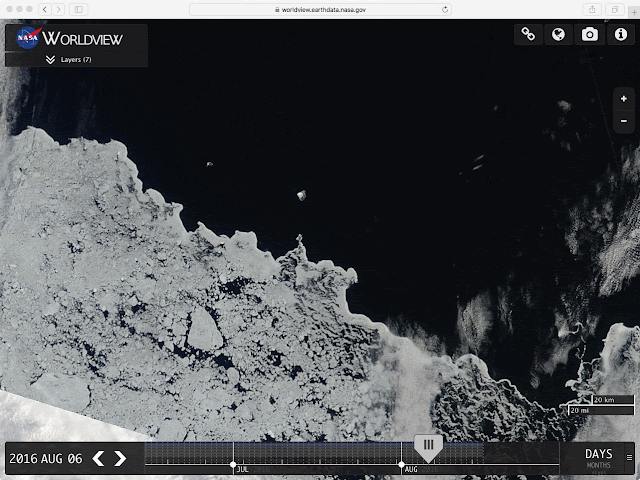~Preceding a mega lake at the Pole coming in a few days
If Atmospheric pressure drops substantially, sea level rises by not much, up to
63 cm , but that should be enough to make even sea ice to slide downwards (tidal timing may make the sliding a bit interesting). Gravity rules us all, big and small, all things conform, a recent small 988 mb Low now in the North Pole CAA-Greenland quadrant is preceding a stronger one, but its effect on fragile looser sea ice left its imprint:
This small see through 988 mb Low moving from East to West just South of the Pole (towards the Atlantic), apparently innocent looking and minding its regular business, caused some damage to an already very fragile Central Arctic Basin unraveling, as I write, sea ice:
August 11-12 AMSR2 Sequence enlarged and zoomed show a disturbance in sea ice consolidation in a mere day, especially enlargement of a sea water lakes (surrounded by sea ice). This was done with a weak Low, now we will see what a more than moderate 970 mb will do, highly likely clearing the Pole as never seen before. wdAugust13,2016
















